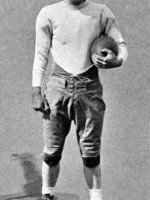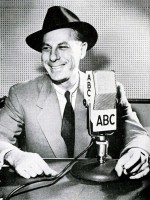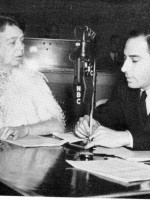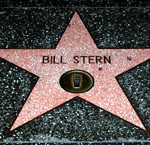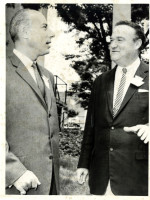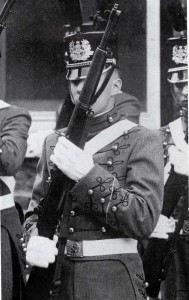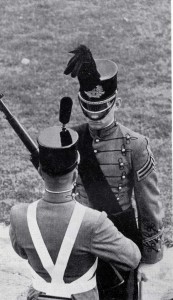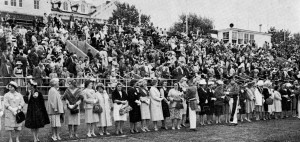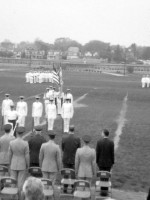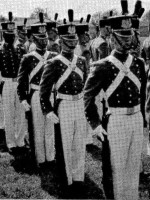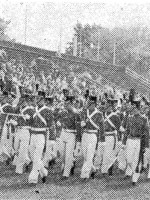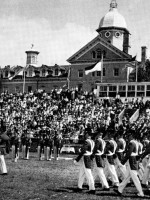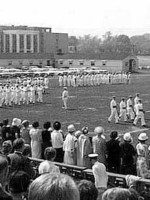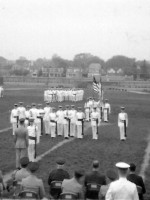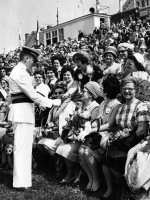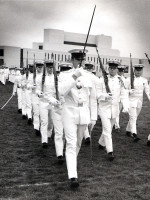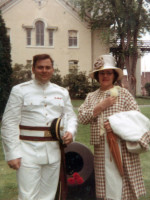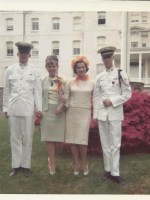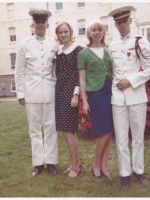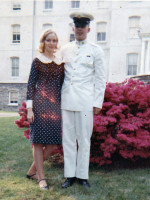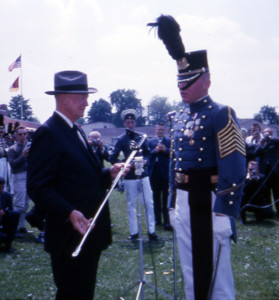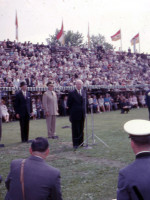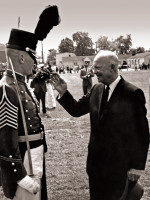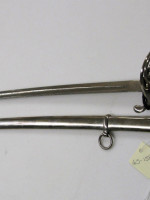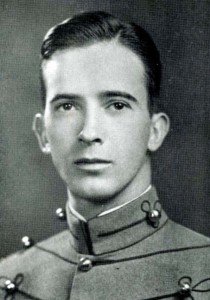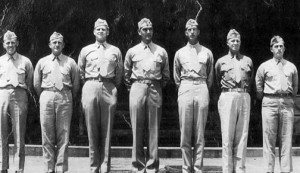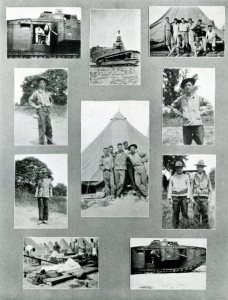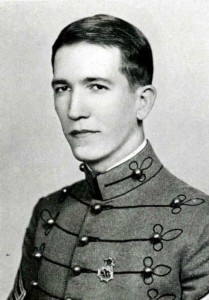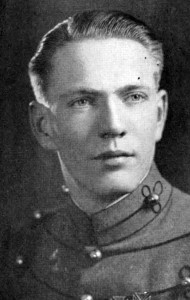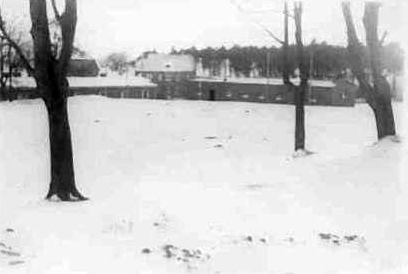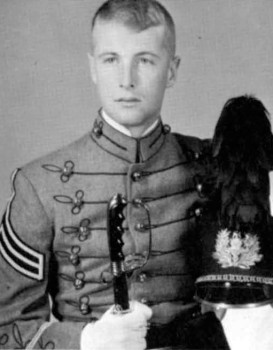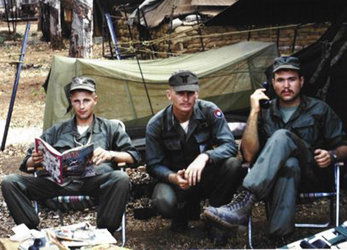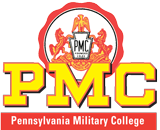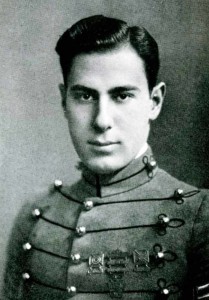 William Stern had failed several attempts at boarding schools. While his parents were traveling Europe, they happened to meet a Cadet from Pennsylvania Military College. Impressed by the young man’s poise and manners, the Sterns decided that PMC was the place for Bill to receive discipline and an education. Bill Stern flourished at PMC; he played basketball, football, and polo, used his extensive skills on the saxophone to help start a jazz group, led the college orchestra, and was appointed Captain Adjutant. Bill’s page in the Sabre and Sash, however, pointed to his future. “Is every body happy? This is Bill Stern speaking from the Bowl of Roses way out here in Lieperville.” Bill is a Graham McNamee, Ted Lewis, and a Frank Carideo all rolled up into one little bundle of vitality.”
William Stern had failed several attempts at boarding schools. While his parents were traveling Europe, they happened to meet a Cadet from Pennsylvania Military College. Impressed by the young man’s poise and manners, the Sterns decided that PMC was the place for Bill to receive discipline and an education. Bill Stern flourished at PMC; he played basketball, football, and polo, used his extensive skills on the saxophone to help start a jazz group, led the college orchestra, and was appointed Captain Adjutant. Bill’s page in the Sabre and Sash, however, pointed to his future. “Is every body happy? This is Bill Stern speaking from the Bowl of Roses way out here in Lieperville.” Bill is a Graham McNamee, Ted Lewis, and a Frank Carideo all rolled up into one little bundle of vitality.”
“For twenty years, Stern was a fixture in broadcasting, rising to become one of the most famous, successful, and recognizable announcers of his time. He hosted several shows, including Spotlight on Sports, Remember This Date, and the very popular Sports Newsreel, a prime-time radio show featuring sports stories, news, and interviews. Sports Newsreel was heard on NBC from October 1937 to September 1953, when it moved to ABC, ending in June 1956. He was the recipient of over 30 awards from various radio, movie, and television publications for broadcasting. These included: the Billboard poll 1948-1949, the Radio Mirror poll 1949, the Scripps Newspaper Award Contest for five consecutive years, the Hearst newspaper award for four consecutive years, and the Radio Daily poll for ten years. In addition, Motion Picture Daily’s annual radio poll announced Bill Stern as the ‘Best Sports Announcer’ in 1951 for the 13th consecutive year. Stern retired from broadcasting in 1956 after collapsing at a football game.”
“Bill Stern never forgot Pennsylvania Military College. He returned in 1944 to deliver a eulogy for the PMC cadets lost during World War II, addressed a PMC sports banquet in 1955 and narrated the film ‘The PMC Story’ in 1957. Bill Stern paid his highest tribute to the college in a letter to the PMC Alumni Bulletin in which he wrote, ‘Whatever I did, you can credit to PMC. I came there a young punk, and left a man. PMC taught me much, mainly that in this life you get what you put into it.’ “
On November 19, 1971, Bill Stern died of a heart attack at the age of 64. He was inducted into the National Sportswriters and Sportscasters Hall of Fame in March 1974 and the American Sportscasters Association Hall of Fame in 1984.
Reprinted with permission from the Widener University Archives.
